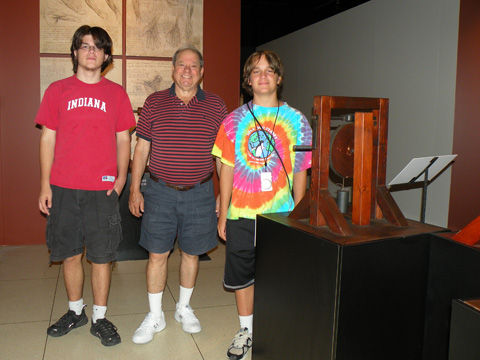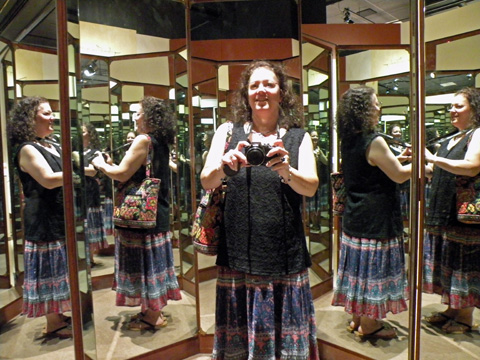By Percy Bysshe Shelley
It lieth, gazing on the midnight sky,
Upon the cloudy mountain peak supine;
Below, far lands are seen tremblingly;
Its horror and its beauty are divine.
Upon its lips and eyelids seems to lie
Loveliness like a shadow, from which shrine,
Fiery and lurid, struggling underneath,
The agonies of anguish and of death.
Yet it is less the horror than the grace
Which turns the gazer's spirit into stone;
Whereon the lineaments of that dead face
Are graven, till the characters be grown
Into itself, and thought no more can trace;
'Tis the melodious hue of beauty thrown
Athwart the darkness and the glare of pain,
Which humanize and harmonize the strain.
And from its head as from one body grow,
As ... grass out of a watery rock,
Hairs which are vipers, and they curl and flow
And their long tangles in each other lock,
And with unending involutions shew
Their mailed radiance, as it were to mock
The torture and the death within, and saw
The solid air with many a ragged jaw.
And from a stone beside, a poisonous eft
Peeps idly into those Gorgonian eyes;
Whilst in the air a ghastly bat, bereft
Of sense, has flitted with a mad surprise
Out of the cave this hideous light had cleft,
And he comes hastening like a moth that hies
After a taper; and the midnight sky
Flares, a light more dread than obscurity.
'Tis the tempestuous loveliness of terror;
For from the serpents gleams a brazen glare
Kindled by that inextricable error,
Which makes a thrilling vapour of the air
Become a ... and ever-shifting mirror
Of all the beauty and the terror there—
A woman's countenance, with serpent locks,
Gazing in death on heaven from those wet rocks.
--------
We went downtown again on Sunday, this time to the National Geographic Explorers Hall and the Smithsonian's National Museum of Natural History. The wonderful Da Vinci: The Genius exhibit that I saw twice in Baltimore is at National Geographic, this time for free, and they're showing the Mark Rylance movie in a real theater -- plus they permit photos! We took my parents since they hadn't seen the exhibit in Baltimore. The long, illustrated timeline that opened the exhibit there is absent now, and not all the working machines that people get to touch are on display, plus they don't have large-size prints of the Mona Lisa using different photographic techniques, but it was less crowded so I didn't mind the omissions.
By contrast, Natural History was absolutely mobbed. It's near the end of the exhibit of the Hope Diamond outside of its familiar setting, and the mob at Gems and Minerals was so bad that I didn't even try to get close. Oddly, the new display on human evolution wasn't nearly as crowded, so we got to see the big wall of skull casts from a variety of evolutionary offshoots, the most complete set of bones from a Neanderthal skeleton in the world, the nearly intact French-owned Neanderthal and Cro-Magnon skulls, and the game room in which visitors get to play leader of a country and make decisions about how best to develop the public health, economics, social values, and environment (I had clean air and water and very healthy people, but the economy tanked and I was deposed, heh).

A replica of the third Codex Forster, a small notebook containing Da Vinci's notes and designs for hydraulic machines, written at some point before 1505.

My dad and kids beside a machine to balance weights, recently built from a sketch in one of Da Vinci's notebooks.

Adam calls this the "fail tank" because when a full-scale replica of this design was built by the British army, they discovered that the gears faced the wrong way and hypothesized that he put in a design flaw so no one could steal and copy the plan. Adam thinks Da Vinci just screwed up.

The image on the right shows the colors of the Mona Lisa as they look today. The image on the left shows the colors as they would have looked when Da Vinci first painted it, before varnish and time damaged them.

This photo, taken with a 240 megapixel camera designed specifically to study the painting, reveals that the original Mona Lisa had eyebrows and eyelashes, though they can no longer be seen.

Here I am in Da Vinci's mirror chamber, designed with eight sides to allow an observer to view any object inside the chamber from all sides at once. Da Vinci intended for people to look through a hole in one of the doors, but people can also stand inside it.

In the film about Da Vinci, a team of scientists and a skydiver recreate a full-size version of this parachute and test it (it works fine). Da Vinci was obsessed with flight and designed several flying machines for humans, as fans of Star Trek: Voyager surely recall (here is a model based on a bat's wing).

Da Vinci also designed several musical instruments, including a double flute and these mechanized drums intended for use in military marches.
We got home in time to watch the end of the World Cup -- congratulations to Spain and to the psychic octopus -- then had dinner with my parents, then finished out the weekend with Pirates of the Caribbean: At World's End. My love for that movie only grows every time I see it. I am wary of the impending fourth film because these movies are about Elizabeth Swann for me, and I'm not sure I really want to see a POTC movie she isn't in, with or without Penelope Cruz.

No comments:
Post a Comment